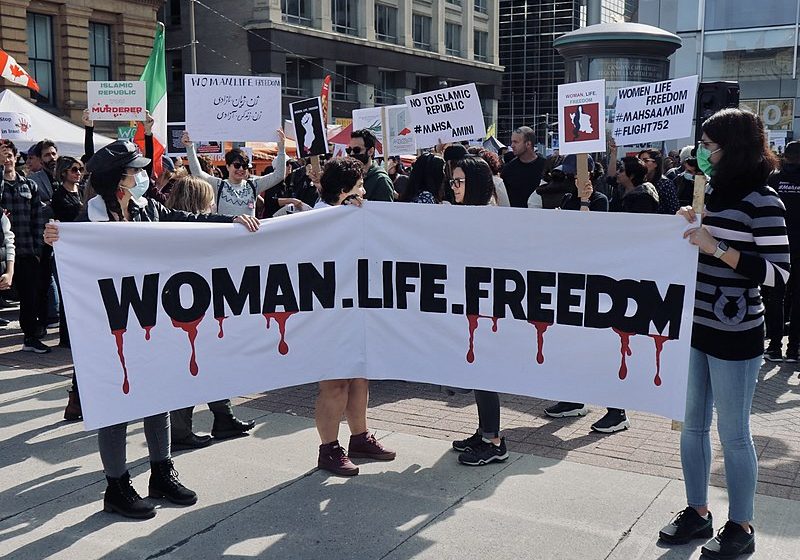Australia/Israel Review
Behind the News – May 2019
Apr 29, 2019 | AIJAC staff

Rockets and Terror
On March 25, a long-range rocket was launched from the Gaza strip, directly hitting a home in the village of Mishmeret in central Israel, injuring eight people. Israel retaliated by striking targets throughout Gaza and Hamas fired several dozen missiles and mortars into southern Israel, but a ceasefire was quickly declared.
In Gaza, the weekly “March of Return” mass riots along the fence celebrated a one-year anniversary on March 30. Four Palestinians were killed and several rockets launched into Israel. Incendiary balloons and kites, as well as IEDs and Molotov Cocktails, continue to be used along the fence, while isolated security incidents occurred with regularity throughout the West Bank.
Long missing Israeli soldier buried on Mt Herzl
The remains of IDF tank driver Sgt. First Class Zacharia Baumel, missing in Syria for 37 years, were repatriated and buried with honour at Jerusalem’s Mt. Herzl military cemetery on April 4.
Baumel was captured in 1982 in Lebanon at the battle of Sultan Yaqoub. He was never confirmed alive again.
An IDF recovery operation, dubbed “Bittersweet Song”, was reportedly initiated two years ago by then-Defence Secretary Avigdor Lieberman in coordination with Russian forces in Syria to recover the bodies of Baumel and his two fellow crewmen.
According to reports, the return of Baumel’s remains was facilitated though the unlikely assistance of the Palestinian terrorist group Popular Front for the Liberation of Palestine-General Command (PFLP-GC), who allegedly discovered them in a cemetery in the Yarmouk refugee camp while fighting alongside the Russians on behalf of the Syrian regime.
Islamic State(less) remains threat
On March 23, the Islamic State lost its final sliver of territory in Syria to a US-backed coalition of Kurdish-led fighters. Despite its military defeat after five years of brutal fighting, the now-stateless Islamic State has reportedly squirrelled away hundreds of millions of dollars it can continue to access. Experts say it also maintains the manpower and local and transnational networks necessary to wage a vicious insurgency and conduct terrorism throughout the world.
Its leadership is mostly intact, and although it has lost physical control over territory in Syria and Iraq, its global affiliates – particularly in Nigeria, Egypt, Afghanistan, and the Philippines – remain capable and continue to expand their spheres of influence.
US designates Iran’s IRGC a terror organisation
On April 8, US President Trump announced a decision to designate the Islamic Revolutionary Guard Corps (IRGC) as a terrorist organisation. The IRGC, a branch of the Iranian military charged with protecting the nation’s Islamic system, is a powerful political, military, economic and social force with close links to Supreme Leader Ayatollah Ali Khamenei.
The move by the US, the first time it has designated part of another government a foreign terrorist organisation, will allow the imposition of further sanctions and is designed to increase pressure on Iran.
Iran has retaliated by announcing it will designate the US Central Command, which oversees American military operations in the Middle East, as a terrorist organisation.
Meanwhile, an Iranian ship carrying 107.22kg of heroin was seized on March 24 near the southern coastline of Sri Lanka, on its way to Europe. Sri Lanka officials reportedly arrested two Iranians in connection with the crime who are both senior members of anti-narcotic police forces in Iran. Iranian sources reportedly allege that the state police of Iran, NAJA, have been resorting to smuggling narcotics recently for money-laundering purposes.
More countries end Iranian oil imports
On April 2, the US announced that three of the eight countries to whom the US granted six-month sanctions waivers in November 2018 had since stopped importing Iranian oil. The announcement did not specify the countries, but industry analysts believe they are Greece, Italy and Taiwan. A US decision on whether to renew, reduce or end such waivers is due by May 2. Other countries issued waivers in November were China, India, Japan, Turkey and South Korea. According to the Trump Administration, US oil sanctions against Iran have removed about 1.5 million barrels of Iranian oil from the global market daily since May 2018, and reduced Iranian regime oil income by US$10 billion.
In related news, France has clamped a ban on Iran’s Mahan Air from April 1, following a German ban on the airline in January, on the grounds Mahan is used for transporting military equipment and personnel to Syria and other Middle East war zones. The US banned the airline in 2011.
New Hezbollah missile factory found
The Lebanese Shi’ite terror group Hezbollah has built a new precision missile factory in Beirut with the help of its Iranian patron, Israeli media reported on April 1. Israeli Prime Minister Binyamin Netanyahu reportedly shared this information with US Secretary of State Mike Pompeo, who warned Lebanese Prime Minister Saad Hariri during his state visit to Lebanon in March that the facility’s existence increases the risk of escalation with Israel.
In September 2018, Prime Minister Benjamin Netanyahu, speaking at the UN, accused Hezbollah of having three precision missile factories in or underneath civilian buildings near Beirut’s main airport. A few weeks later, Hezbollah reportedly closed the sites.
IAEA inspects Iranian nuclear site after long delay
International Atomic Energy Agency (IAEA) sources revealed on April 4 that inspectors were sent during February to examine the Turquz-Abad warehouse in Teheran which, according to Israeli intelligence, housed up to 300 tons of nuclear equipment and as much as 15 kilograms of radioactive material. It is unclear what was found in the inspection. The site was exposed by Israel in September last year based on analysis of the secret Iranian nuclear archives obtained by Israel in early 2018.
Both the US and Israeli governments have been urging the IAEA to inspect the site for months, as satellite imagery suggested that Teheran was using the delay to move containers away from the location to hide evidence of forbidden activities there.
Meanwhile, the Washington-based Institute for Science and International Security announced on April 2 that, based on the Israeli-held Iranian archival material, it had uncovered another previously unknown element of Iran’s illegal nuclear program called “Project Midan”. This project, which operated in the early 2000s, aimed to create an underground nuclear test site, and develop the methods to evaluate nuclear explosive yield, with an early non-nuclear explosive test conducted in 2003. Such activity is forbidden by the Nuclear Nonproliferation Treaty (NPT), of which Iran is a signatory.
Saudi nuclear reactor nearing completion
Satellite imagery shows that Saudi Arabia has almost completed the construction of its first nuclear reactor, and it will possibly be fully operational within a year. Saudi officials claim that the facility, located in Riyadh and to be followed by more reactors in coming years, is only meant for non-military uses. Last year Crown Prince Mohammed bin Salman stated that his country would develop its own atomic bomb if its regional arch-enemy Iran does so.
Israeli lunar probe crashes
Israel’s space program experienced a disappointing setback on April 11 when its first lunar probe, Beresheet, crashed on the moon’s surface after it suffered a malfunction at a critical phase of its landing sequence.
The US$100 million privately-funded spacecraft – built jointly by SpaceIL and the Israeli defence firm Israel Aerospace Industries – was launched via a SpaceX Falcon 9 rocket on Feb. 21 and achieved lunar orbit on April 4.
As the spacecraft approached the moon, SpaceIL lost contact with Beresheet just minutes before the spacecraft was supposed to touch down, dooming the robotic lander.
Nevertheless, the mission was seen as a major achievement, as Israel became the seventh country to send a spacecraft into lunar orbit.
SpaceIL has since announced a second attempt, dubbed “Beresheet 2.0”.






